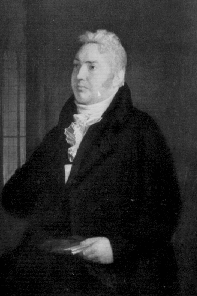 |
 |
 |
 |

There, motivated by the heady political and intellectual atmosphere attending the early years of the French Revolution, Coleridge and his new friend Robert Southey (then attending Balliol College, Oxford), whom he met in Bristol in 1794, proposed a utopian community that would fulfill the idealistic goals of the revolutionaries without degenerating into the violence of the Terror, a community to be called "pantisocracy" and to be established in the New World, by the Susquehanna River in Pennsylvania, on land bought by the radical Joseph Priestley after his exile from England. In preparation, the two friends joined up in Bristol and, needing funds for their project, assumed the role of public lecturers.
In 1795, under pressure from Southey, Coleridge hesitantly married Sara Fricker, the sister of Southey's wife Edith; their first son, Hartley, was born the following year. Shortly afterward, succumbing to the pressure of conventional family obligations, Coleridge and Southey abandoned the pantisocracy experiment.
That same year Coleridge met William Wordsworth and the two spent much time discussing poetry, politics, and philosophy. This rich personal and intellectual association bore significent fruit as the two decided to collaborate on a volume of poems intended to revolutionize the practice of contemporary poetry. Called Lyrical Ballads, it was first published as a single volume in 1798, then greatly expanded and published in two volumes, with a now famous preface written by Wordsworth, in 1800. Coleridge's powerful representation of psychological obsession and remorse, The Rime of the Ancient Mariner, was the poem chosen to open the Lyrical Ballads.
Supported by a £150 annuity from Josiah and Thomas Wedgwood, Coleridge was freed from the need to support himself financially, and, commencing in September 1798, he joined the Wordsworths for a long tour of Germany. There, he became quickly fluent in the language and acquainted himself with many developments in German philosophy and scholarship that were as yet little known in England.
When he returned to England in July of 1799, Coleridge fell in love with Sara Hutchinson, the sister of Wordsworth's future wife. The domestic trouble this occasioned is evident in the despondent tone of "Dejection: An Ode" (1802).
This doomed romantic attachment and Coleridge's failing health, doubtless exacerbated by his increasing dependence on laudanum, an elixir of opium, led him to accept a post in the warmer climate of Malta as secretary to the acting governor from 1804 to 1806, after which he traveled through Italy. His health, however, did not improve, nor did his peace of mind. On his return he separated from his wife and lived with the Wordsworths, leaving Edith and Robert Southey to care for his family and generally dividing his time between London and the Wordsworth's house in Grasmere. This is a period of professional uncertainty for Coleridge, split between giving public lectures on literature and, from June 1809 to March 1810, attempting to cultivate a larger audience through a periodical he called The Friend.
In 1810, after permanently settling in London, Coleridge became estranged from Wordsworth, who disapproved of the irresponsible way in which he handled his family obligations. In his first years in London Coleridge suffered from chronic illness and from his dependence on opium to ameliorate it. He remained highly active, however, as a literary figure, delivering a well-attended course of lectures on Shakespeare, and seeing to the production of a successful drama of his own, Remorse, in 1813 (a revision of a drama called Osorio he had written years before, in the late 1790s). Not long after this, Coleridge experienced a religious conversion: his reading of the seventeenth-century Anglican divine, Robert Leighton, led him to abandon the Unitarianism he had practiced and to embrace instead the Church of England and its orthodoxies.
Beginning in 1815, Coleridge sought to consolidate his literary reputation. Although he continued to involve himself in essentially minor original projects, such as his play Zapolya (which appeared in 1817) Coleridge's major endeavor at this time was to restore his reputation as a significant poet of the age. This he accomplished through publishing two successive volumes of verse, Christabel; Kubla Khan, a Vision; The Pains of Sleep in 1816, and Sibylline Leaves: A Collection of Poems in 1817. Meanwhile, the biographical preface he had contemplated for the latter volume so grew under his retrospective thinking that it eventuated in a lengthy, two-volume project, his most influential work in prose, that he called Biographia Literaria, which was published in tandem with Sybilline Leaves. This work aspires to be a combination of literary criticism, autobiography, and philosophical speculation, tracing Coleridge's life through childhood, through his fascination and later disillusionment with the associationist philosophy of David Hartley, and his collaboration with Wordsworth. Among its most famous parts are those passages in which he describes his notion of the imagination and critiques Wordsworth's poetry with analytical acuity.
From this point on, however, Coleridge's productions fell off. In 1824 he was elected a fellow of the Royal Society of Literature, which entitled him to an annuity of £105. Another work of criticism, Aids to Reflection, appeared in 1825. His last prose work, On the Constitution of the Church and State ostensibly a contribution to the debate over Catholic Emancipation, appeared in 1830, a year after the law was enacted. A third edition of his Poetical Works appeared in 1834 shortly before his death on 25 July.
A separate entry focuses on the considerable importance of Coleridge in Mary Shelley's young life and on the influence he cast on her first novel.